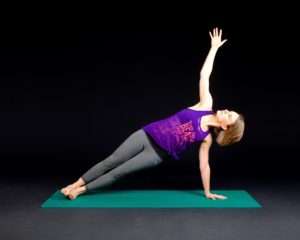Patients are told by their doctors to work their core for low back pain. They all want to know what are the best core exercises for low back pain? We will start to answer that question in this blog. Or you if you would rather watch a tube video discussing the best core exercises for back pain or why you get pain with core exercises then click HERE.
First I want to answer the most common question regarding sit ups and low back pain.
“I get low back pain during sit-ups. Am I doing something wrong, or should I avoid them?”
Great question! I’m glad this lady asked because so many people think to work their core means sit ups. People equate the core to abdominals only and that is not true. The best core exercises for low back pain include abdominals, the low back, and hips.
And even though sit-ups are one of the most common go-to exercises to get your “abdominals strong” – are they really that effective? And more importantly, can this exercise cause back pain?…
If you’ve ever tried to do an ab workout and realized half way through that your back is feeling things it shouldn’t be feeling, you’re not alone.
For me (and for many of our patients) it’s any ab exercise that asks me to sit up on my tailbone and move my legs that causes a slight twinge in my back.
Which is frustrating when you want to keep active but can’t because your back is in pain!
To understand why this happens, you first have to remember that the abs AND lower back are part of your core.
While we often think of our core as being our abs – the abs are only one part of the equation!
Your core is made up of a group of muscles that work together to support the body. It wraps around the entire body, and includes muscles that are in your lower back too.
When you do any exercises for the core, you’re impacting all of the other parts that make up your core too – including your lower back.
Lower-back pain during any exercise involving your core is usually a sign that your core is too weak to do that exercise.
So, why does this happen?
Well, if your lower back isn’t strong enough, the core exercises you’re doing with all the right intentions, may just be asking too much of your back causing the muscles to strain. Alternatively, if you have a weakness anywhere else in your body, your lower back may overcompensate by taking on more than it can handle.
But pain during exercise doesn’t always mean your back or core is weak – nope, pain in your back can also be a sign that the way you perform the exercise needs tweaking.
For many abdominal exercises, a small misstep in how you perform the exercise can put pressure on your back, as the spine gets irritated each time we move into a position that isn’t correct.
One of the most common mistakes we see people make when performing these types of core exercises is ‘hyperextension’ (this is when your hips aren’t tucked under causing a curve in the spine). If you can focus on keeping your tailbone (hips) tucked under, drawing your belly button towards the spine, this will help alleviate back pain and prevent it from getting worse.
Another helpful tip to keep in mind is to remember that the lower back needs to remain ‘glued’ to the floor for the majority of the core exercises involving the abdominals.
When you back comes off of the floor, your back is in a vulnerable position. However, it is very important that you don’t bear down with your low back into the floor or mat. If you bear down this will just increase the pressure in your spine and irritate your back as well.
So before you progress with any core exercise, make sure you can perform them with your back flat on the floor first – that way you’ll protect yourself from back pain and you’ll be strengthening your back at the same time. It is a very fine line to activate the core – not too much and not too little… Just enough.
Not only a weak core, but muscle tightness and fatigue can also lead to poor form and lower back pain too…
If your glutes and hips are really tight, chances are you’ll feel the strain in your back during your daily activities, not just exercise.
As well as tightness, when you’re tired, your muscles stop functioning properly and your body will look for nearby muscle groups to compensate – most of the time the lower back and hips being the ones that take the strain!
So, what can you do to stop back pain getting in the way? First off, stop doing any movements that cause you pain. Any pain is your body’s way of telling you to stop what you’re doing no matter what. Basically, if it doesn’t feel good, don’t do it!
However, the good news is that there are plenty of simple ways you can strengthen your core without straining your back.

Core exercises like dead bugs, glute bridges and planks, (so long as you perform them with your hips tucked under with your core and glutes engaged), are all great examples of movements that will help strengthen your back and entire core along with decreasing your chances of getting any injuries. And as long as your hip flexors are not tight and pulling on your lumbar spine you will be able to move correctly with common core exercises and not irritate the lumbar spine.
To get familiar with the feeling of planting your lower back on the ground:
- Lay on your back with your legs in the air, squeezing a block or tennis ball between your legs. Try to flatten your low back to the ground.
- Slowly start to lower your legs, squeezing around the block/tennis ball (a slight bend of the knees is fine).
- Just before you feel your low back try to lift off of the ground, squeeze the block, push the low back toward the ground underneath you, and take three deep breaths.
- Then slowly raise your legs back up to the starting position.
- If your hip flexors are tight or overactive this exercise will be hard to do correctly
- This should not hurt; with a very inflammed condition this core exercise is likely too advanced and we would need to start with something easier.
There are so many non-ab-specific exercises that can give you a “sneaky” core workout – lunges, kettle bell swings, body-weight squats. Adding them to your routine will help you gain core strength without ever having to do a crunch or twist, so you can work on your essential core strength while hitting other big muscle groups at the same time.
To conclude – sit-ups aren’t bad for you when performed correctly. Just make sure you have a strong enough core without your back coming off of the floor, until you progress to being able to perform them safely. Sit ups with a bulging disc or herniated disc places extreme strain on the disc and really needs some tips and modifications to do correctly.
**Remember core exercises should not hurt your low back. Many times working with a trained professional can help you figure out what might be going wrong with your movements. The exercise itself might be fine – it is the execution of it that might need fine tuning.
For more tips like this to help you or a loved one ease low back pain, here’s a free guide to help you keep active with less back pain – just click HERE.






